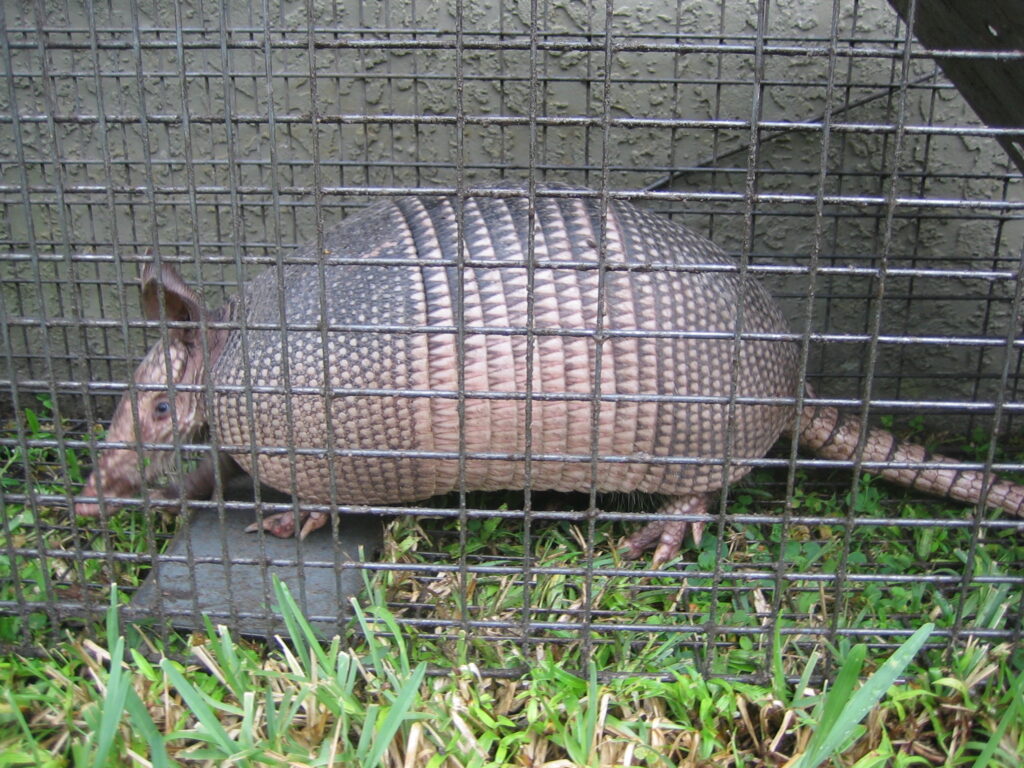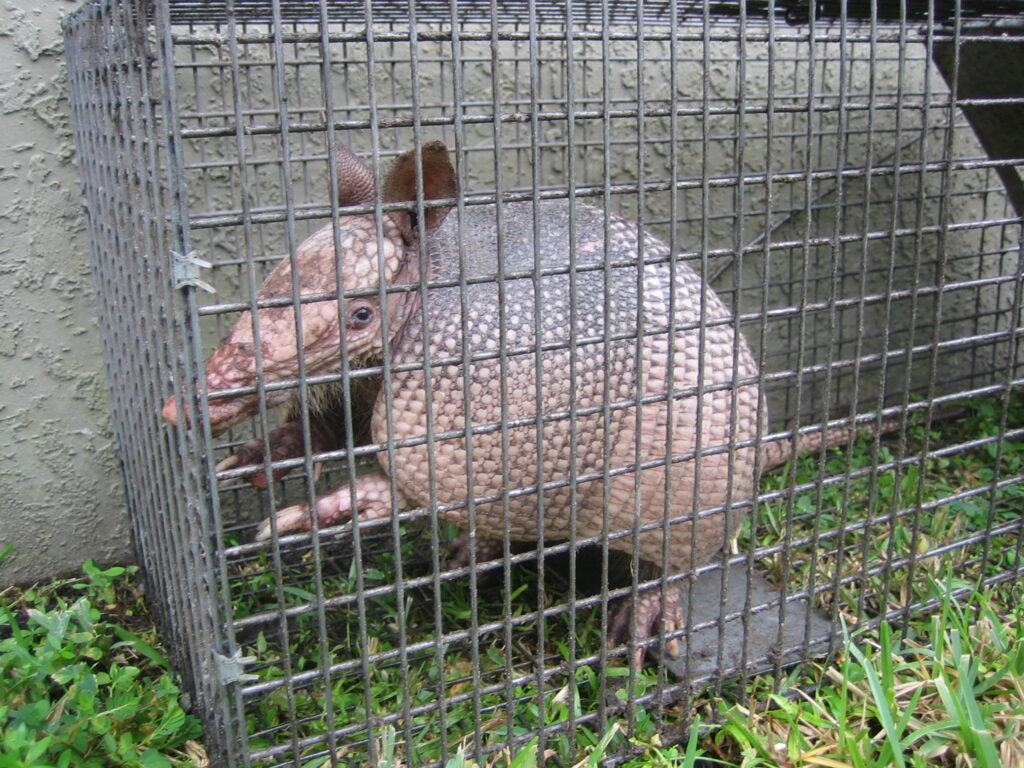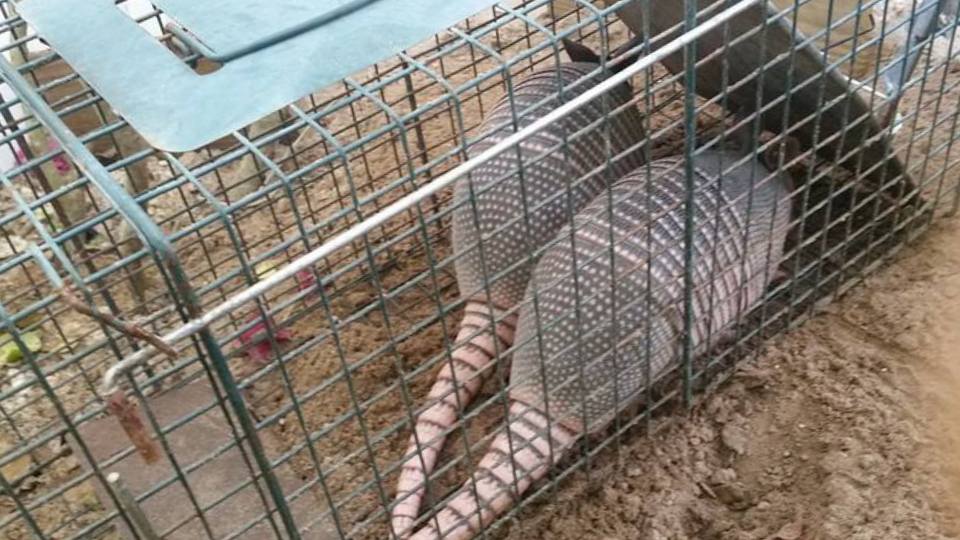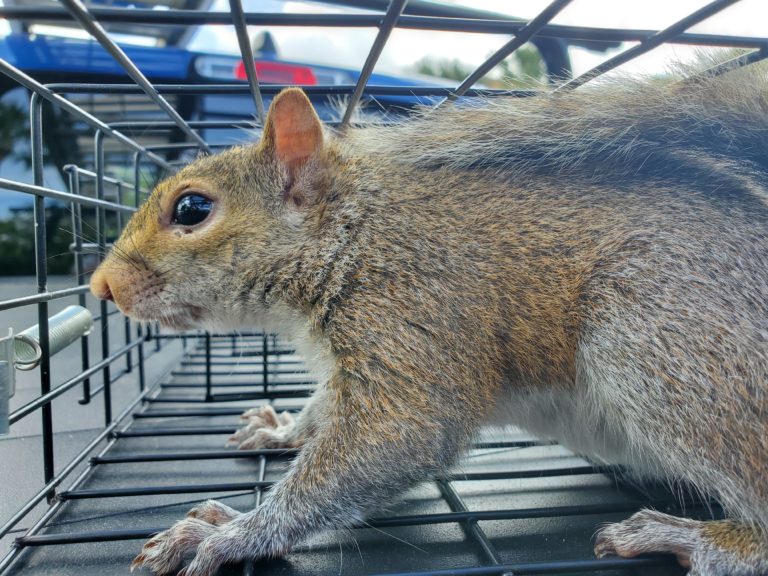GET RID OF ARMADILLO ONCE AND FOR ALL
A+ Wildlife Control Services In Miami Florida
Humane Wildlife Removal and exterminator Serving MIAMI
Armadillos are funny looking creatures – thanks to their gloomy faces. Although they are docile and sleep for about 20 hours a day, they are excellent burrowers. It takes them less than 15 minutes to burrow into the earth and get completely out of sight. Do you know that they can reach top speeds exceeding that of Usain Bolt? So much for these weird-looking critters.
The major problem associated with armadillos is their unending drive to dig. They primarily do this to obtain their yummy food – worms, grubs, and insects. Their poor eyesight is compensated for by their great sense of smell which guides them to food sources. Also, they dig holes so that they can easily retreat into them when faced with danger. In this post, we’ll look at some problems caused by armadillos and how to remove them from your property.








Problems Associated with Armadillos
1) Seal Up Entry Points
In their quest for food, armadillos can dig large tunnels under a house, pipeline, or concrete floor. All these cause damage and severely undermine the structural integrity of your building. Similarly, they create small holes all over the lawn, disfiguring the landscape.
2) Sickness
Unfortunately, some armadillos are known to carry the bacteria, Mycobacterium leprae, which is responsible for Hansen’s disease (Leprosy). There are actual documented cases of infections from armadillos in the Southern United States. Although the risk of contracting the disease is very low, it is best to avoid contact with armadillos whenever possible.
Armadillo Capture Process
1) Inspection
As with all wildlife removal processes, the first step is to fully inspect your property. This will help to determine where the armadillos are coming from and where they are residing. It will also help in developing an effective trapping and prevention plan.
2) Trapping
Because of their primary diet, it is almost impossible to kill armadillos with poison. They wouldn’t eat it! Similarly, repellents are highly ineffective when it comes to catching armadillos. The best method to employ is trapping.
When trapping armadillos, no bait is used. Instead, success ultimately lies in setting the traps along the path of the armadillo so it can walk inside. This is easier said than done. It requires a thorough understanding of an armadillo’s behavior to effectively camouflage the trap and set it correctly. Sometimes, it helps to use a temporary barrier to create a funneling system that will guide the animal into the trap. This usually works because armadillos are not intelligent and seem to pay trivial attention to their surroundings. Thereafter, it’s a matter of checking the traps daily until it gets captured. After which relocation follows.
However, before trapping is done, it is advised to check with state laws regarding the capture and relocation of armadillos.
3) Prevention
The first step is to eliminate their sources of food. This can also be achieved by special repellents that will make the worms, grubs, and insects less appetizing to them.
Another great way to repel armadillos from your property is by fencing it. Since armadillos are great burrowers, the fence has to extend underground so that they can’t dig past it.
Conclusion
Although not native to the United States, armadillos have adapted well in the southern states, primarily of Florida and Texas. In the quest for food, they burrow through unwanted areas, causing discomfort for many homeowners. Though difficult to remove, they can be captured if trapped correctly. That’s why you should consider a professional armadillo removal service.


Damages Armadillos Can Cause to Your Home
Armadillos are among the most unique nuisance animals in the United States. That’s why armadillo removal is very crucial. While they might be interesting, they certainly are a nuisance in many parts of the country. Many people do not realize how much damage armadillos can actually cause to your home and property. Continue reading to learn more about the damages armadillos cause and how you can keep these critters away for good.
Foundations
While the armadillo might not cause any damage directly to homes, it causes several different problems solely from its destructive digging habits. One of the most serious damages armadillos can cause to your home is weakening the foundation. When armadillos dig, they often like to dig alongside or underneath structures. When these structures are homes and buildings, it can have serious consequences. As the ground is removed from around the foundation, this leads to increased stress and pressure on the foundation with nothing to give it support. Over time, this will lead to a gradual deterioration of the foundation, eventually culminating in a failure. The size and scope of the failure can vary widely, but it will usually be a very expensive fix. In addition, it could cause further damage to the rest of the foundation as it is left supporting more weight.
Pipes and Cables
In a similar vein as the foundation of your home or building, the pipes and cables below ground can also be damaged. When armadillos dig, they often dig indiscriminately, looking for a food source of any kind. When they happen to dig around pipes and cables, it can lead to some serious problems. The armadillo could begin messing with the pipe or cable, or enough stress or pressure could come onto the pipe or cable that would cause it to fail eventually. Either way, it can spell big problems.
Sidewalks & Driveways
Similar to the problem with foundations, sidewalks and driveways can also be damaged by armadillos. When these critters decide to tunnel underneath the concrete structures, it can cause the cement to be heaved up on one side and sink on the other. Or, it could take a while longer, but it could cause cracks which will eventually end up leading to a crumbling sidewalk or driveway.
Yard Problems
In addition to the problems above which primarily affect your home, there are many more problems caused by armadillos that will damage your yard. If armadillos invade your yard, you will begin to notice many half-foot-deep holes that are pockmarked all around your yard. While this is not a huge deal, many people want their yards to look nice. In addition, any fruits, vegetables, or flowers you plant may be uprooted by armadillos on their hunt for food. Since these critters love to burrow, it can create many problems dealing with your home and your yard.
How can I remove armadillos?
Removing an armadillo here and there can be an easy enough task for most homeowners. It usually involves using a live armadillo trap and setting it upright in front of the burrows you find. This should usually be enough to catch most small-scale armadillo problems when they start. If there are many armadillos or you cannot seem to control the problem, it would likely be a good time to begin calling a professional wildlife removal service so that the problem does not get bigger and bigger.


How to Get Armadillos Out From Under A House
Armadillos are among the most common pests encountered by homeowners all over the United States. This is why, in our years of experience with A+ Animal Solutions, we’ve racked up more than our fair share of armadillo stories. Luckily for everyone involved, we’ve also come up with quite a few methods and techniques for getting rid of armadillos safely and humanely.
In this post, we thought we’d share with you our plan for getting an armadillo out from underneath a house, shed, deck, and so on.
First off, why should you get the armadillo out?
Armadillos aren’t generally dangerous pests on your property, as they are not known for their aggressive nature. They much prefer keeping to themselves, and probably won’t bother you directly, as long as they’ve got water and food for themselves. Visit armadillocontrol.com to learn more about how to control them.
However, there’s the problem – because in order to get food, they will dig up these great big holes in your garden, and often under your property, which can cause obvious problems a little later on. This is why you want to remove armadillos from underneath a structure as swiftly as possible. In doing so, however, it’s important to keep in mind that these creatures are not here to harm you, and so you should try and temper your anger towards them.
How can you get armadillos out from under the house?
We at A+ Animal Solutions have encountered all sorts of interesting methods employed both by ourselves, as well as by DIY homeowners over the years, all to some degree of success.
Unfortunately, there aren’t many armadillo removal methods, as is the case with other wildlife intruders. Some homeowners found it useful toward the armadillo out using natural repellents. While armadillos are known for their poor eyesight and sense of hearing, they make up for it with their excellent sense of smell. This is why it’s natural to assume that a great way to get them out is by using strong smells against them.
One commonly used ingredient, that most of you probably have inside your home already, is castor oil. Chiefly known for its many beauty uses, castor oil is often used in the wildlife removal world to naturally ward off unwanted wildlife intruders. It has a strong, unpleasant odor which is said to repel armadillos, as well as other wildlife. So you might try to mix equal parts castor oil with dishwasher liquid and water and use it to soak the area where the armadillo’s dwelling is.
However, that’s pretty much the only DIY armadillo removal method that we, at A+ Animal Solutions, know of, since other common methods (effective for other animals) have had little success against armadillos.
So your next stop should be either a specialty store, to get yourself a steel cage, in order to trap the armadillo yourself, or, failing that, you could give a call to a professional wildlife removal specialist.
Since trapping a wild animal is a fairly difficult, unpleasant, and sometimes even dangerous process, many homeowners prefer calling in a professional, such as A+ Animal Solutions. As mentioned, we’ve had years of hands-on experience getting rid of pesky armadillos from human properties. What’s more, we always do it safely and humanely, without harming the animal in the removal process, since that’s only fair.
Of course, you could attempt trapping the armadillo yourself. In order to do this, you’ll want to place the trap in the armadillo’s natural way, then use wooden planks or boards to gently steer the armadillo towards the open trap. When we say trap, of course, we are referring to a non-lethal one that will then allow you to safely relocate the animal to an area where it won’t be able to bother anyone else.
What to do next…
This is where a professional removal service like A+ Animal Solutions comes in really handy, as we are equipped to deal with the exclusion aftermath. It’s important to identify what attracted the armadillo in the first place, and then make sure you remove that, to avoid future invasions.
It’s also really important to fix and seal the space where the armadillo was, to make sure you don’t accidentally attract another one!


How to Trap an Armadillo
Although armadillos were once a rare sight throughout much of the United States, they’ve become much more popular as the country gets warmer, and people move around. These little animals are incredibly unique and much harder to get in a place to trap, and it can be difficult to understand just what you need to do to make sure that you get one under control and removed.
Fortunately, however, there’s a little secret that should help make the process much easier. Armadillos are suckers for a well-baited trap, although it can still be tough to get everything set up correctly. As such, here’s how to trap an armadillo.
Find Where to Trap
First thing’s first, the only way to trap an armadillo is to find a place and how to trap it. These animals are very habit heavy, meaning that if you spot one in a location a few times, then you’ll be likely to find them wandering those same spots at the same time. Fortunately for you, they’re also stuck with poor eyesight, meaning that a well-placed trap can quickly capture an armadillo.
Usually, an armadillo will live in a burrow, an underground spot for them to come and go from as they please. While this could be directly next to your house or property, it could also be in a yard, field, or other location where there are plenty of snacks and worms for the armadillo to feast on. As such, it might take a little effort to find an armadillo burrow, although once you do, you’ll be fit to trap.
If you can’t find a burrow, however, then you might have to place the trap along a wall or fence in a way that blocks off a common place that the little animals cross through. Remember, armadillos are extremely habitual, meaning that if you find them passing a specific spot, then a trap should work along that same area.
Setting the Trap
When it comes to the trap itself, go with a cage trap. That’s given, considering it’s likely the most humane and less painful trap to put an animal in, and it works well for an armadillo. Nonetheless, it can be a little harder than expected to actually set up the trap in a way that attracts the armadillo to enter and trigger it.
Armadillos are nocturnal animals, although they sometimes wander throughout the day. In either situation, they like to forage for their food, meaning that they’ll look for and dig out worms and other small animals from the ground to eat, rather than eating easily accessible things on the surface. While that’s easy for them, it means that you likely can’t bait a trap with worms on the surface or near it.
Nonetheless, if you plan on baiting the trap, many recommend you use mealworms or earthworms, placed in the back of the cage in a harder place to access. Once the trap is ready (baited or not), then place it at the entrance of the burrow or in a place that the armadillo often accesses. If it’s the entrance of the burrow, then you’ll likely catch it quickly. Otherwise, it might take a little while.
Either way, check often as armadillos might manage to break out of a cage trap after a while. Although that’s not a guarantee, many have found an escaped armadillo after a few hours. Once it is trapped, however, then make sure you’re safe and look at local regulations as to how you’ll need to deal with it. Worse comes to worst, you can contact local animal control or a company with local knowledge and they’ll take care of the armadillo for you.
CALL NOW
GET FAST QUOTE









